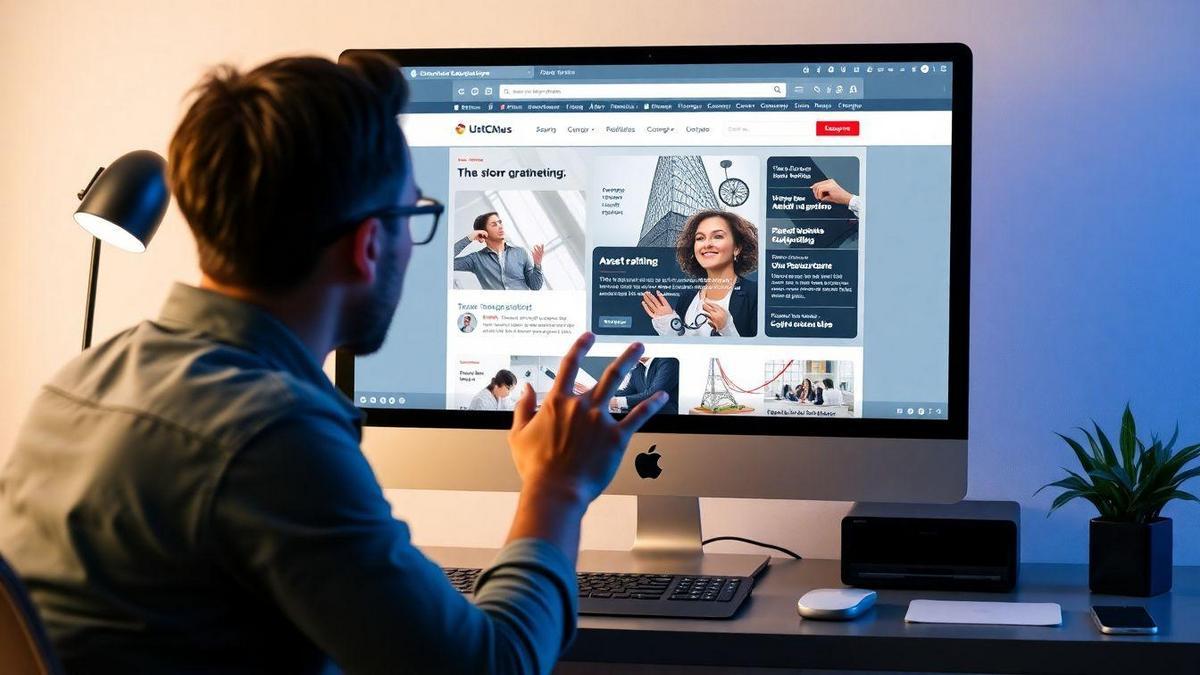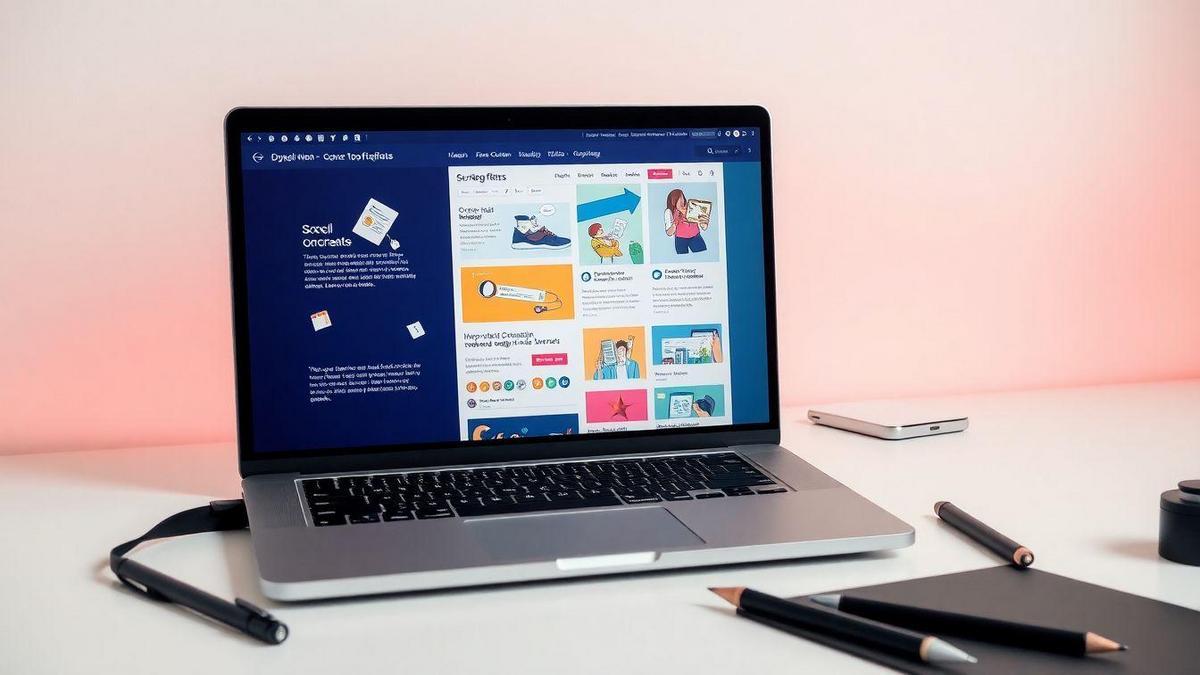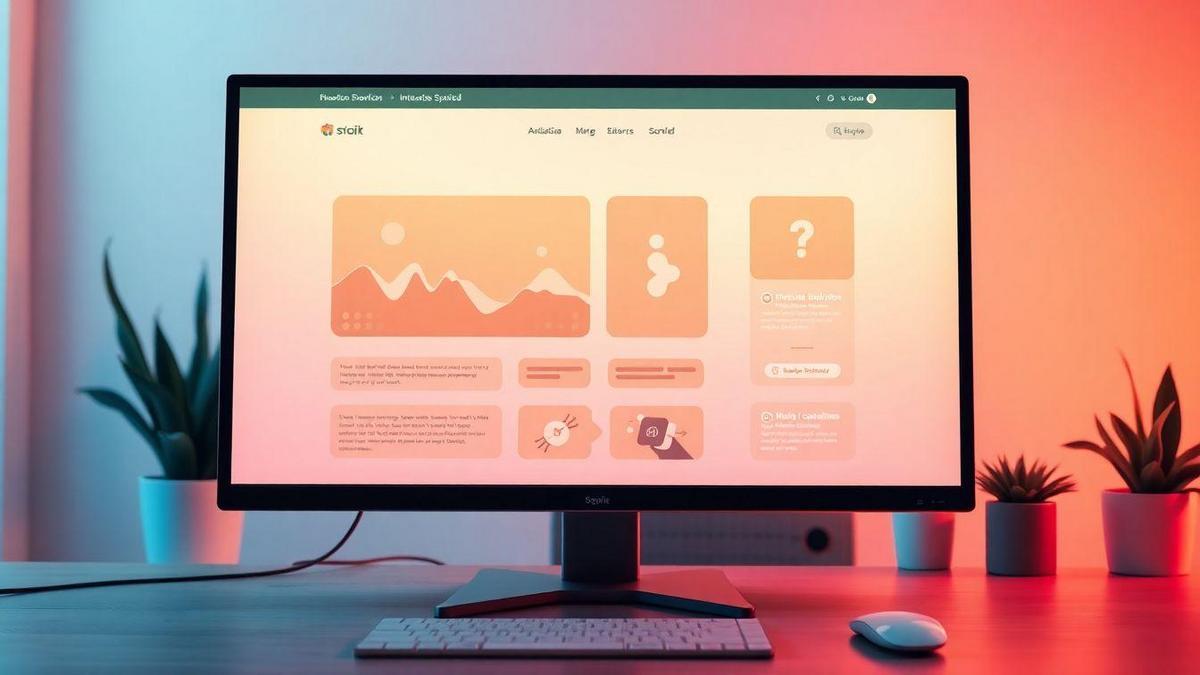Are you curious about interactive scrolling: trend or hype? You’re not alone! In this article, we’re diving into the exciting world of interactive scrolling in web design. You’ll learn what it is, how it can boost user engagement, and why it’s becoming so popular. We’ll also explore some amazing real-world examples, key features, and the benefits it brings to websites. By the end, you’ll see how this trend could change the way users experience websites forever!

Understanding Interactive Scrolling: Trend or Hype?
What is Interactive Scrolling?
Interactive scrolling is a web design feature that adds a dynamic touch to your website. Think of it as a way to make your site feel alive! When you scroll down a page, different elements might move, change, or even pop up. This makes the experience more engaging for you as the user. Instead of just reading text or looking at images, you get to interact with the content in fun and exciting ways.
The Rise of Interactive Scrolling in Web Design
Over the last few years, interactive scrolling has gained popularity. Many websites now use it to grab your attention and keep you interested. Why? Because it helps tell a story! Imagine you’re scrolling through a webpage that showcases a new product. As you scroll, you see animations that highlight features or even videos that explain how it works. This keeps you hooked and makes the information easier to digest.
Key Features of Interactive Scrolling
Here are some key features that make interactive scrolling stand out:
| Feature | Description |
|---|---|
| Parallax Scrolling | Background images move slower than foreground elements, creating depth. |
| Animations | Elements animate as you scroll, adding life to the content. |
| Content Reveal | New information appears as you scroll down, keeping the experience fresh. |
| Interactive Elements | Buttons or links that change when hovered over, inviting clicks. |
These features can make your website feel more lively and enjoyable. As you explore different sites, you might notice how these elements change the way you interact with the content.
The Benefits of Interactive Scrolling for User Engagement
How Interactive Scrolling Boosts User Engagement
Interactive scrolling is like a magic carpet ride for your website. It grabs your visitors’ attention and keeps them glued to the screen. When you scroll, the content moves in a way that feels alive. This dynamic experience makes users want to explore more.
Imagine you’re reading a story, and each scroll reveals a new chapter. It’s exciting! This kind of interaction helps visitors feel more involved. They’re not just passive readers; they’re part of the action.
Real-World Examples of Engaging Websites
Let’s look at some websites that nail interactive scrolling:
- Apple: Their product pages use scrolling to showcase features. As you scroll, images and text pop up, making it feel like a mini-adventure.
- Nike: They tell stories through scrolling. Each section brings a new visual or video, making you want to keep going.
- Spotify: Their Wrapped page uses scrolling to reveal your music stats. It’s personal and fun!
These sites show how interactive scrolling can transform a simple visit into an engaging journey.
Statistics on User Engagement with Scrolling Effects
Here’s a quick look at how effective interactive scrolling can be:
| Statistic | Impact |
|---|---|
| 67% of users prefer interactive sites | They are more likely to stay longer. |
| 80% of users recall brands with engaging content | Scrolling effects make brands memorable. |
| 50% increase in time spent on sites with interactive elements | More engagement means more potential sales. |
These numbers speak volumes! They show that when you make your site interactive, you’re not just adding flair; you’re boosting user engagement.

Enhancing Website Usability with Interactive Scrolling
Making Navigation Easier with Scrolling Effects
Have you ever visited a website and felt like you were on a roller coaster ride? That’s the magic of interactive scrolling! This trend is all about creating smooth transitions as you scroll down a page. Instead of jumping from one section to another, you glide through content, making your experience feel seamless.
Imagine you’re reading about your favorite hobby. As you scroll, images pop up, text slides in, and videos start playing. This keeps you engaged and helps you understand the content better. It’s like telling a story where every scroll reveals a new chapter!
How Scrolling Improves User Experience
So, why does interactive scrolling matter? Well, it’s simple. When you use scrolling effects, you make it easier for your visitors to find what they’re looking for. Here’s how:
| Benefit | Description |
|---|---|
| Engagement | Keeps users interested and reduces bounce rates. |
| Clarity | Helps break down complex information into digestible parts. |
| Visual Appeal | Adds a modern touch that can impress visitors. |
You see, when users are engaged, they’re more likely to stay on your site longer. And that’s a win-win for both you and your audience!
Tips for Effective Usability in Interactive Design
Now that you know the benefits, let’s talk about some tips for making your interactive scrolling effective:
- Keep It Simple: Don’t overdo the effects. Too much can be distracting.
- Test on All Devices: Make sure your scrolling works smoothly on phones, tablets, and computers.
- Use Clear Calls to Action: Guide users on what to do next as they scroll.
- Monitor Performance: Regularly check how your site is performing to fix any issues quickly.
By following these tips, you can create a user-friendly experience that keeps visitors coming back for more.
The Role of Digital Storytelling in Interactive Scrolling
Crafting Compelling Narratives through Scrolling
Have you ever visited a website that felt like a journey? That’s the magic of digital storytelling through interactive scrolling. It’s not just about what you see; it’s about how you feel as you scroll down. Imagine you’re on a website that tells a story as you move your finger or mouse. Each scroll reveals new chapters, making you want to keep going.
When websites use interactive scrolling, they create a flow that pulls you in. Instead of just reading text, you’re experiencing a narrative. It’s like a book that comes to life! This method lets you connect emotionally, making the content memorable.
Examples of Storytelling in Web Design
Let’s look at some websites that nail digital storytelling through scrolling:
| Website | Storytelling Technique | Why It Works |
|---|---|---|
| Apple | Product journeys with visuals | Engages users with stunning imagery |
| Spotify | Music history through interactive timelines | Makes users feel part of the music |
| Airbnb | Travel stories from real users | Creates a sense of community |
These examples show how effective scrolling can be. Each site uses interactive elements to tell a story that resonates with visitors. They pull you in and make you feel something, whether it’s excitement or nostalgia.
The Impact of Storytelling on User Retention
So, why should you care about storytelling in web design? Well, it can have a huge impact on how long visitors stay on your site. When users connect with a story, they’re more likely to stick around. Think about it: if you’re captivated by a tale, you want to see how it ends.
Studies show that websites with strong narratives can boost user retention by up to 50%. That’s a big deal! When visitors feel engaged, they’re more likely to return. It’s like having a favorite book you can’t wait to read again.

Exploring Design Innovation with Interactive Scrolling
Cutting-Edge Techniques in Web Design
When you think about web design, what comes to mind? Is it the layout, the colors, or maybe the fonts? Today, let’s dive into something that’s taking the design world by storm: interactive scrolling. This technique adds a dynamic element to your website. It’s like giving your visitors a rollercoaster ride through your content!
Interactive scrolling allows users to engage with your site in a fun way. As they scroll down, different elements come to life. For instance, images can slide in, text can fade, and backgrounds can shift. This makes the experience more enjoyable and keeps visitors on your page longer.
Here are some cutting-edge techniques you might find interesting:
| Technique | Description |
|---|---|
| Parallax Scrolling | Background moves slower than foreground elements, creating depth. |
| Scroll-triggered Animations | Elements animate as users scroll, grabbing attention. |
| Infinite Scrolling | Loads more content as you scroll down, perfect for blogs and galleries. |
Future Trends in Interactive Scrolling
So, what does the future hold for interactive scrolling? Well, it’s looking bright! As technology improves, we can expect even more exciting features. Imagine websites that respond to your scroll speed or even your cursor movements. These innovations will create a more personalized experience.
Some trends to watch out for include:
- Voice-activated scrolling: Imagine saying “scroll down” and your page moves automatically!
- Augmented reality: You could see 3D models pop up as you scroll, making products come to life.
- Micro-interactions: Small animations that happen when you scroll, like a button that changes color, adding a delightful touch.
How Innovation Shapes User Experience
Let’s get to the heart of the matter: how does all this innovation really affect your experience? Well, it’s all about making things easier and more fun. When you visit a site that uses interactive scrolling, you feel more connected. It’s like the website is talking to you, guiding you through its content.
This approach can make complex information simpler. For example, if you’re reading about a new product, seeing it in action through scrolling can help you understand it better. You’re not just reading; you’re experiencing.
In conclusion, interactive scrolling is more than just a passing trend. It’s a fresh way to engage users and make their experience memorable. So, the question remains: Interactive scrolling: trend or hype? The answer is clear—it’s here to stay, and it’s changing the game for web design!
The Importance of Website Interactivity
Why Interactivity Matters in Modern Web Design
In today’s fast-paced digital landscape, interactivity is more important than ever. When you visit a website, you want to feel like you’re part of the action, right? Websites that allow you to engage—by clicking, scrolling, or exploring—keep your attention longer. Think about it: would you rather read a static page or play with a site that responds to your actions? Interactivity makes the experience dynamic and exciting.
Benefits of Engaging Users through Interaction
Engaging users through interactive elements can transform a simple website into a memorable experience. Here are some key benefits:
- Increased User Retention: When you interact with a site, you’re more likely to stick around. You’re curious about what’s next!
- Enhanced Learning: Interactive features help you learn better. For example, quizzes or interactive infographics make information easier to digest.
- Stronger Emotional Connection: When you engage with a site, you feel more connected. This builds trust and loyalty.
| Benefit | Description |
|---|---|
| Increased User Retention | Keeps visitors on the site longer |
| Enhanced Learning | Makes information easier to understand |
| Stronger Emotional Connection | Builds trust and loyalty with users |
Measuring the Success of Interactive Features
To know if your interactive features are working, you need to measure their success. Here are some ways to do that:
- Analytics: Use tools like Google Analytics to track user behavior. Check how long visitors stay on your site and which features they use most.
- Feedback: Ask your users what they think. Simple surveys can provide valuable insights into what works and what doesn’t.
- Conversion Rates: Look at how many visitors take action, like signing up for a newsletter or making a purchase. Higher rates often mean your interactive elements are hitting the mark.

Scrolling Effects: Enhancing Content Presentation
Different Types of Scrolling Effects
Scrolling effects can really spice up your website. They bring your content to life and keep visitors engaged. Here are some popular types of scrolling effects you might want to consider:
- Parallax Scrolling: This effect makes the background move slower than the foreground, creating a 3D feel. It’s like walking through a scene where some things are closer than others.
- Infinite Scrolling: This lets users scroll down and see more content without clicking. Think of social media feeds that keep loading as you go.
- Scroll-triggered Animations: These animations kick in as you scroll down. For instance, images might fade in or slide into view. They grab attention and add flair.
- Scroll-based Navigation: This effect allows users to navigate through sections of your site simply by scrolling. It can make browsing feel smooth and seamless.
How Scrolling Effects Capture Attention
Scrolling effects are like the cherry on top of your website. They make visitors stop and look. When you add movement, it draws the eye. For example, if you have a beautiful image that slides in as someone scrolls, they’re likely to pause and take it in.
Studies show that users spend more time on sites with engaging visuals. In fact, a site with good scrolling effects can increase the time visitors stay by up to 50%! That’s a big deal!
Best Practices for Using Scrolling Effects
Using scrolling effects can be fun, but you want to do it right. Here are some best practices to keep in mind:
| Practice | Description |
|---|---|
| Keep it Simple | Don’t overdo it. Too many effects can confuse visitors. |
| Focus on Speed | Ensure effects don’t slow down your site. Fast load times are key! |
| Test on Devices | Check how effects look on mobile and desktop. You want them to shine everywhere! |
| Match Your Brand | Choose effects that fit your website’s style and message. |
The Challenges of Implementing Interactive Scrolling
Common Pitfalls in Interactive Design
When you dive into interactive scrolling, it can feel like stepping into a wild jungle. There are many pitfalls you might encounter. Here are a few to watch out for:
- Overloading with Content: Too much information can overwhelm your audience. Keep it simple and clear.
- Slow Load Times: If your site takes too long to load, visitors might leave before they even see your cool features.
- Poor Navigation: If users can’t find what they are looking for, they’ll get frustrated. Make navigation easy and intuitive.
Balancing Aesthetics and Functionality
Striking the right balance between looks and usability is crucial. You want your site to be visually appealing but also easy to use. Here are some tips to help you:
- Use Clear Calls to Action: Make sure buttons and links stand out.
- Limit Animation: Too many moving parts can distract users. Use animations sparingly.
- Test on Different Devices: What looks good on a desktop may not work well on a phone. Always check how your design performs across various devices.
Solutions to Overcome Design Challenges
Facing challenges doesn’t mean you’re stuck. Here are some solutions to help you navigate through:
| Challenge | Solution |
|---|---|
| Overloaded Content | Prioritize key messages and visuals. |
| Slow Load Times | Optimize images and scripts. |
| Poor Navigation | Create a clear menu and search bar. |
By keeping these tips in mind, you can make interactive scrolling a hit rather than a miss.

The Future of Interactive Scrolling in Web Design
Predictions for Interactive Scrolling Trends
Interactive scrolling is changing the game in web design. As we look ahead, you can expect to see some exciting trends. First off, parallax scrolling will continue to gain popularity. This technique creates a sense of depth by moving different layers at different speeds. It’s like watching a 3D movie right on your screen!
Another trend is scroll-triggered animations. These animations bring your content to life as users scroll down the page. Imagine a story unfolding right before their eyes! This keeps your audience engaged and encourages them to stick around longer.
Lastly, mobile-friendly designs will be crucial. With more users browsing on their phones, ensuring that your interactive scrolling works seamlessly on smaller screens is a must.
How to Stay Ahead with Web Design Innovations
Staying ahead in web design is like riding a wave. You need to know when to paddle and when to catch that perfect swell. Here are some tips to keep you surfing smoothly:
- Keep Learning: Web design is always changing. Follow blogs, attend webinars, and join online forums. The more you know, the better you’ll be.
- Experiment: Don’t be afraid to try new things. Use interactive scrolling in your projects and see what works best for your audience.
- Gather Feedback: Ask your users what they think. Their insights can help you tweak your designs and make them even better.
Preparing for the Next Wave of User Experience
To get ready for what’s next, focus on creating a seamless experience for your users. Here’s how:
- Test Your Designs: Before launching, check how your interactive elements perform. Are they smooth? Do they grab attention?
- Optimize Loading Times: Users don’t like to wait. Make sure your site loads quickly, even with all those fancy animations.
- Stay User-Centric: Always think about your audience. What do they want? What will keep them engaged?
| Tips for Interactive Scrolling | Importance |
|---|---|
| Test your designs | Ensures a smooth experience |
| Optimize loading times | Reduces user frustration |
| Stay user-centric | Keeps your audience engaged |
Frequently asked questions
What is interactive scrolling?
Interactive scrolling is when you use scroll actions to trigger animations or change content on a webpage. This makes the browsing experience more engaging and lively.
Is interactive scrolling a trend or hype?
Interactive scrolling is a trend. Many websites are using it to captivate users. It can grab attention and create a memorable experience.
How does interactive scrolling improve user experience?
It keeps you engaged. You see animations and changes as you scroll. This makes exploring a site fun and interesting!
Are there any downsides to using interactive scrolling?
Yes, sometimes it can slow down a website. If not done right, it can be distracting. You want to ensure it enhances, not harms, your browsing experience.
Should I use interactive scrolling for my website?
If you want to stand out, yes! It can make your site unique. Just remember to keep it simple and user-friendly.

Marina is a passionate web designer who loves creating fluid and beautiful digital experiences. She works with WordPress, Elementor, and Webflow to create fast, functional, and visually stunning websites. At ReviewWebmaster.com, she writes about tools, design trends, and practical tutorials for creators of all levels.
Types of articles she writes:
“WordPress vs. Webflow: Which is Best for Your Project?”
“How to Create a Visually Stunning Website Without Hope”
“Top Landing Page Design Trends for 2025”
Why it works:
She brings a creative, accessible, and beginner-friendly perspective to the blog, perfectly complementing Lucas’s more technical and data-driven approach.
